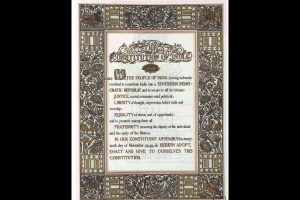Sangeet Piyasi, tabla maestro Samar Saha’s brainchild, stepped into his 32nd year and welcomed winter, the season of music conferences, with its first soiree. Held at Daga Nikunj, the four-day event was dedicated to Pandit Vijay Kichlu and offered several heartwarming moments. The best part of this event was ‘Kishalaya’ on the final day. Under this project, children (up to sixteen) who topped the Natubabu Music Contest organised by Sangeet Piyasi get this prestigious platform to display their amazing talent. There were budding talents who excelled in vocals, sitar, sarod, guitar, santoor, flute, tabla, and dance. One was happy to find students of dwindling instruments like pakhawaj and khol as well. All of them promise a bright future.
However, the main event had a few bright stars in the classical music and dance worlds. Among them, tabla legend Swapan Chaudhuri, an NRI now, stood taller than others. Upon his arrival from the USA, it was his first assignment, and with harmonium, he mesmerised his fans, who thronged the green lawns of the venue to witness his exemplary art of solo playing. The opening day climaxed with Sujata Mohapatra’s enchanting Orissi dance. With time, she seems to have blended the varied colours of life’s experiences into her art, which has become her second self. The same applies to the vocalism of Begham Parveen Sultana. Despite her sore throat, she gave a sterling recital in Raga Yaman.

Samar Saha’s cordial relations with every artiste enabled him to bring a few self-effacing geniuses on stage, such as the highly regarded multi-talented Acharya Jayanto Bose, who plays several instruments with equal expertise. For this recital, he chose harmonium to present khayals in ragas Maluha Kalyan and Puria Kalyan, set to traditional but unfamiliar talas like Madhumalati and Shree. Another versatile maestro, Bickram Ghosh’s reliable tabla, handled the talas expertly. After a long hiatus, dhrupad maestro Falguni Mitra made a comeback with rarely seen veteran sarangi-nawaz Roshan Ali, Pradip Palit (harmonium), and Tapas Das (pakhawaj) by his side. The octogenarian vocalist’s breath-control, powerful, and sur-filled voice was very effective when he sang self-composed dhrupad and dhamar in Shyam Kalyan and Abhogi, respectively. The pakhawaj could do better by sticking to simple theka during vocal improvisations and going for skill-show during pada-singing.
Veteran sarod exponent Debashish Bhattacharya chose his Guru Buddhadev Dasguta’s favourite Chhaya and, with tabla maestro Arup Chattopadhyay, etched a neat persona of the raga. Extremely erudite vocalist Subhra Guha, competently supported by Shubhajyoti Guha (tabla), Rupashree Bhattacharya (harmonium), and disciples Sanjukta, Sabina, and Moupali, rendered a rarely heard raga Gauri (Marwa anga) with typical Agra nuances and closed with a delighting thumri.
Sitar virtuoso Partha Bose’s alap in Raga Shree sounded better in the lower octave. The Patadeep gatkari was pepped up due to Pandit Sanjay Mukherjee’s seasoned tabla, as both enjoyed the beauty of different patterns of rhythm play. Gifted with a deep, melodious voice, a younger and talented Ambarish Das also portrayed an emotive raga Shree with the support of the brilliant tabla of Debojyoti Bose and Hiranmay Mitra’s dexterous harmonium. A lilting Desh Thumri completed the picture.
Birthday Bash
The Ashish Khan School of World Music celebrated the 84th birthday of its beacon with a daylong soiree on 5th December at the school’s own auditorium. Under the supervision of the ustad’s worthy nephew, Shiraz, the long line of artists was handled very competently.
The highlight of the day was a very poignant sarod recital in Puria Dhanashri by Debanjan Bhattacharya with Debjit Patitundi on the tabla. After the soulful alap in aochar anga, replete with perfectly chiselled long meends covering three octaves, for gatkari, he chose a rare Jai tala (13 beats), which he learnt 20 years ago from his guru, Ashish Khan and polished under the loving guidance of Vidushi Amina Perera (Baby-di), a sibling of the Ustad. The jawabi sangat by tabla, which had dialogue-based rhythm play and imaginative tihais in this tala with a sawari-like tail, was enjoyable. Another jhaptal gat taught by Babydi was beautifully treated by this brilliant duo. Tabla virtuoso Soumen Nandi played solo in teental with superb nikas of clear padhant, using all mnemonics with equal ease. One of the chakradars with two layas running side by side was a rare and amazing piece.
Arindam Bhattacharya, flanked by Sourabh Goho (tabla) and Dileep Biswas (harmonium), sang Marwa. After a shaky beginning, he treated the raga lovingly but stopped abruptly to sing an emotive Majh Khamaj thumri. So far, an unobtrusive tabla of Sourabh excelled in laggi.
Sarod exponent Atish Mukherjee played Yaman Kalyan, starting with a short but sweet aochar followed by a slow and fast teental gatkaris. Prangopal Bandopadhyay’s tabla added zing to the recital by assisting in the making of bol-based taans in different chhandas and dialogues with the tabla. Sitarist Deboprasad Chakraborty, with tabla maestro Arup Chattopadhyay as his companion, gave a beautiful version of Jaijaiwanti that applied volume variations very effectively and offered taans that were like raining pearls.
Prestigious Conference
The much-awaited annual ITC Sangeet Sammelan was held at the vast premises of the Sangeet Research Academy (8-10 December). The inauguration saw Padma Vibhushan Pandit Hariprasad Chaurasia being felicitated with ITC Samman by Nazir Arif (trustee, SRA) after the welcome address by Sharadindu Dutta, the present Director,SRA. Hariji became very nostalgic while recalling the country-wide bus tours (organised by SRA’s founder-director, Vijay Kichlu). ‘Kabhi nahi bhulunga,’ he admitted.
Apart from showcasing its world renowned gurus such as the undisputed Master of jod or Mishra ragas Ulhas Kashalkar (TilakKamod, Basant Kedar, Hindol Bahar and Bhairavi), extremely versatile maestro Ajoy Chakrabarty (Ramkali khayal, Kalingada thumri and bhajan), an epitome of serene music Uday Bhawalkar (dhrupad in regal raga Darbari Kanada and a frivolous Adana) and brilliant former scholar turned present junior guru Omkar Dadarkar (raga Malkauns), SRA also presented quite a few celebrated guest artistes such as sarod maestro Tejendra Narayan Majumdar and Carnatic flute vidwan Shashank Subramanyam in a peaceful melody oriented Hindustani and rhythmically dynamic Carnatic duet (ragas Bihag and Charukeshi), Carnatic violin-siblings Lalgudi Krishnan and Lalgudi Subramanyam (ragas Devgandhar and Shivendra Madhyam), guitar virtuoso father-son duo Vishwa Mohan Bhatt and Salil Bhatt (raga Nat Bhairav), percussion-trio tabla maestro Arup Chatterjee, Mridangam vidwan S Sekhar and sreekhol wizard Gopal Burman (rhythm ensemble, teental), vocalist Kalapini Komkali, worthy daughter of the legendary Kumar Gandharva (ragas Puria Dhanashri, Hameer and a rasiya) and vocalist father-son duo Pandit Sajan Mishra and Swaransh Mishra, who scripted a memorable emotive finale of the entire Sammelan (pathos dipped raga Jogkauns and bhajan brimming with devotion). Young Vinayak Sahai’s sur-filled sarangi was a big help.
Renowned sarod maestro Prattyush Banerjee, an advisor with SRA, played Chhayanat. The evocative meends and andolans gave a softer look to the raga at a slower than usual pace.
Excellent bolkari adorned the jod; jhala displayed jatis of laya. With tabla wizard Yogesh Samsi, he enjoyed slow gatkari set to eleven beats and adorned it with rhythm-play and mukam-based innovations. One such mukam recalled a traditional bandish ‘Bhari gagari mori’ with delightful addends. For a fast tempo, he chose Maluha Kedar. After a brief, succinct melodic introduction, he played a teental gat stuffed with varied taan patterns, an aesthetically pleasing sawal-jawab with tabla, and a high-speed jhala. Banerjee, who had introduced tappa on the sarod, concluded with one in Pilu set to sitarkhani. Numerous delicate krintans, zamzama, and crystal-clear loops of taans made it shimmer like a cluster of gems.
Sreemoyi Acharya, a junior scholar with SRA, trained under Brajeshwar Mukherjee, and his guru, Ajoy Chakrabarty, sang khayals in Marwa with an eye for neat symmetry. Affectionately supported by Indranil Bhaduri (tabla) and Rupashree Bhattacharya (harmonium), she also ventured to sing a Sohini thumri in jat tala and proved that she is gifted with the innate mizaj of this demanding genre and maturity beyond her age. Amaan Hussain, a budding sarangi student groomed by his father, Sarwar Hussain, gave a brilliant account of his riyaz, resilience, and dedication for this difficult instrument while playing raga Yaman and a Kafi tappa. Unlike most sarangi maestros, his rhythm sense is remarkably good.
Gifted vocalist Moupali Chowdhury, a disciple of SRA-guru Subhra Guha, selected Chhayanat. Her melodious, pleasing, and pliable voice helped her display the beauty of the raga using Agra Gharana’s characteristic nuances. Flanked by Indranil and Rupashree, she fearlessly played with bol-encrusted rhythmic patterns and taans of well-chiselled, varied grains. She closed with a soulful dadra, trailed by a brilliant laggi.
Senior scholar Sai Eishwarya Mahashabde, supported by Ashoke Mukherjee and Rupashree, painted a pristine persona of Multani, aided by his supple voice with good range and mature aesthetics in the silsilewar progression of the raga along with behlawa and clear taans of different grains and speed. His style of dadra presentation was also very skilled. Srijanee Banerjee’s sitar rendering was quite pleasing in the middle octave but went off-key beyond that. Well-versed in playing technique, she has the potential to do better.
The writer is a senior music critic.












